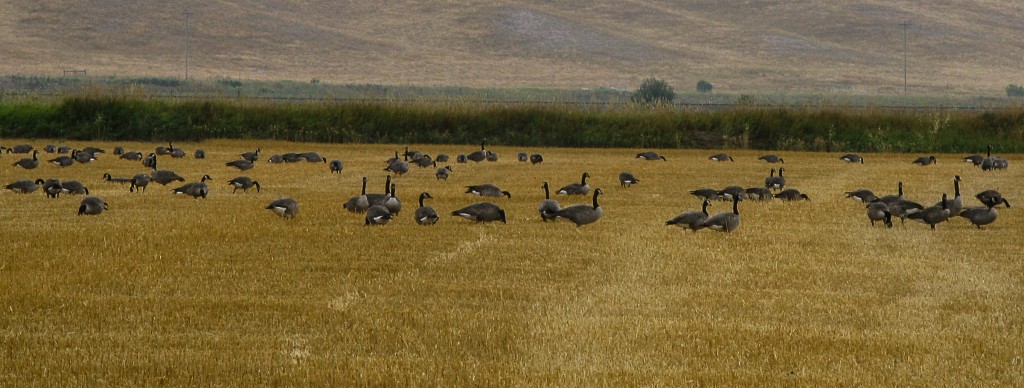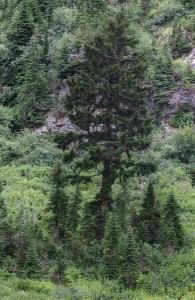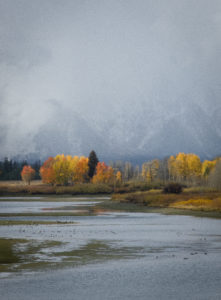 “F. Scott Fitzgerald famously said, ‘The test of a first-rate intelligence is the ability to hold two opposed ideas in the mind at the same time, and still retain the ability to function,’ but the summations of the state of the world often assume that it must be all one way or the other, and since it is not all good it must all suck royally. Fitzgerald’s forgotten next sentence is, ‘One should, for example, be able to see that things are hopeless and yet be determined to make them otherwise.'” from Hope in the Dark by Rebecca Solnit
“F. Scott Fitzgerald famously said, ‘The test of a first-rate intelligence is the ability to hold two opposed ideas in the mind at the same time, and still retain the ability to function,’ but the summations of the state of the world often assume that it must be all one way or the other, and since it is not all good it must all suck royally. Fitzgerald’s forgotten next sentence is, ‘One should, for example, be able to see that things are hopeless and yet be determined to make them otherwise.'” from Hope in the Dark by Rebecca Solnit
Synchronicity is a great thing. I just happened to be reading another book by Rebecca Solnit and saw Hope in the Dark mentioned, so I found a copy and discovered it was just the elixir I needed to give me hope and a sense of purpose in these worrisome times.
Last fall I had the chance to escape the pre-election madness and drive a friend down to Jackson Hole. A visit to the beauty of the Tetons was just the distraction I needed. But when we arrived we found the Tetons had disappeared under a heavy veil of angry storm clouds. And to make matters worse, our arrival coincided with a visit by Donald Trump Jr. It seemed there was no escape from my despair.
Driving through the park, we stopped at a number of viewpoints where disappointed tourists turned their backs on the shrouded mountains, thumbing their cell phones, or taking selfies in front of the signs that named the hidden peaks. Undeterred, we went for hike in the frigid rain, getting soaked in the process, but rather than damping our mood, the walk through an aspen grove shimmering with saturated gold raised our spirits.
That night we were scheduled for a fundraising dinner at a local restaurant. I pictured a stuffy cocktail party atmosphere with the retired rich and well connected crowd I have come to expect at fundraisers. But to my delight, instead I found myself in a room of engaged and enthusiastic young people dedicated to developing a sustainable food system in Jackson. These members of Tetons Slow Food movement were farmers, ranchers, chefs and locals who were all committed to reducing the impacts of global industrial food. They were not just railing against the devastation wrought by corporate food, not just donating money so others could do something about it, but were all actively engaged in making the world a better place. I sat across from a fourth generation rancher who was turning the family business away from a traditional cattle operation and toward raising sustainable, grass fed beef, using the most modern methods of land stewardship in the process.
These young activists did not expect to put Con-Agra or Monsanto out of business, but they understood what Solnit talks about in Hope In The Dark: “The best way to resist a monolithic institution or corporation is not with a monolithic movement but with multiplicity itself…The counter to Monsanto Corporations’ genetic engineering and agricultural patents isn’t just anti-GMO and anti- patenting activism and legislation, it’s local farmers, farmers’ markets, seed diversity, organic crops, integrated pest management, and other practices that work best on the small scale. A farmers’ market selling the produce of local farmers isn’t an adequate solution but ten thousand of them begin to be.”
While the food was superb, the real nourishment of that evening was hope. As Solnit says, “Hope and action feed each other.” The next day I headed north towards home, and still the Tetons were shrouded in storm. I stopped at Jackson Lake Lodge and stood on the deck overlooking the valley. Standing in the freezing drizzle, which alternated with gropple, I took photos of the amazing palette of reds, russets and yellows that filled the valley floor, the colors made more intense by the rain. I was alone in the cold wind, except for a herd of cow elk grazing their way along the river bottom. My SD card was full, but I stood and watched as a rustle of willows behind the cows made their heads pop up and the branches in the willows resolved into the six point rack of giant bull. On the other side of the cows a smaller bull approached and the big bull let out a threatening bugle. Head down, the smaller bull tried to cut out a couple cows, but the big elk charged and there ensued a short, antler clattering battle that ended with the smaller elk turning tail and running off downriver. The brash interloper had tried to steal the herd, but was sent packing in the end.
The drama over, I went into the lodge where everyone sat with their backs to the windows, sipping lattes and checking their e-mails. I went into the gift shop for a new SD card and the clerk offered me one that already had 20 professional photos of the Tetons on it. “It’s perfect for a dismal day like today when there’s nothing to take pictures of and nothing happening out there,” she said. I turned down the prepackaged card and smiled at her. “Sometimes it’s just a matter of where you look,” I said. As I left the park, the clouds began to lift and the Tetons peeked through.
My experience with the Teton Slow Food group has given me more than hope. They have spurred me to take my own actions locally. I have rededicated myself to growing and preserving as much of our food as possible, supporting the farmer’s market and sourcing as much as I can from local growers and ranchers. But that is not enough. I also feel like I need to do everything I can to resist the political agenda of the new administration, not by being angry, or wringing my hands over every outrageous tweet, but by supporting groups like Garden City Harvest, The Missoula Freedom Garden, and Community Food and Agriculture Coalition of Missoula. And I’m going to become more active politically, as hard as that is for someone as introverted as me. On inauguration night I will be attending “An Evening Inspiring Hope and Action” with other local people hoping to turn our anger into action.
“‘Resistance is the secret of joy,’ …quoting Alice Walker. Resistance is first of all a matter of principle and a way to live, to make yourself one small republic of unconquered spirit. You hope for results, but you don’t depend on them…struggle generates hope as it goes along. Waiting until everything looks feasible is too long to wait.” from Hope in the Dark.
Like this:
Like Loading...
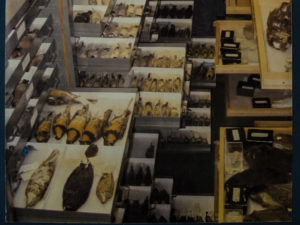 This winter I had the incredible opportunity to be the Artist in Residence at the Montana Natural History Center. It was truly an adventure in curiosity and wonder. The collections, both at the center and at the Philip L. Wright Zoological Museum at the University of Montana opened up the natural world in new ways, with the diversity and complexity of the life contained in those cabinets and boxes
This winter I had the incredible opportunity to be the Artist in Residence at the Montana Natural History Center. It was truly an adventure in curiosity and wonder. The collections, both at the center and at the Philip L. Wright Zoological Museum at the University of Montana opened up the natural world in new ways, with the diversity and complexity of the life contained in those cabinets and boxes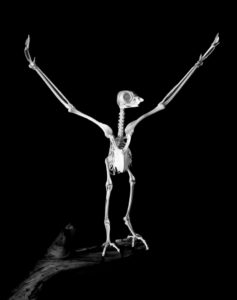 Curiosity and Wonder
Curiosity and Wonder
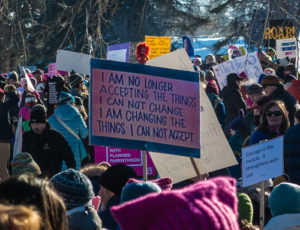
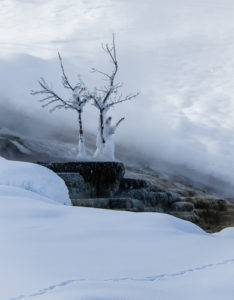 “It is important to attend to the outer world and your responsibilities in it, but sometimes it is just as important to attend to the inner, spiritual world.” words from a tarot card
“It is important to attend to the outer world and your responsibilities in it, but sometimes it is just as important to attend to the inner, spiritual world.” words from a tarot card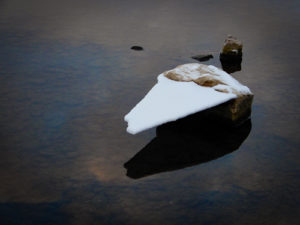
 “F. Scott Fitzgerald famously said, ‘The test of a first-rate intelligence is the ability to hold two opposed ideas in the mind at the same time, and still retain the ability to function,’ but the summations of the state of the world often assume that it must be all one way or the other, and since it is not all good it must all suck royally. Fitzgerald’s forgotten next sentence is, ‘One should, for example, be able to see that things are hopeless and yet be determined to make them otherwise.'” from
“F. Scott Fitzgerald famously said, ‘The test of a first-rate intelligence is the ability to hold two opposed ideas in the mind at the same time, and still retain the ability to function,’ but the summations of the state of the world often assume that it must be all one way or the other, and since it is not all good it must all suck royally. Fitzgerald’s forgotten next sentence is, ‘One should, for example, be able to see that things are hopeless and yet be determined to make them otherwise.'” from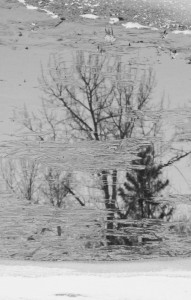 Several people have asked me to post my digital story
Several people have asked me to post my digital story 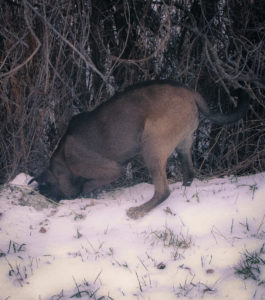
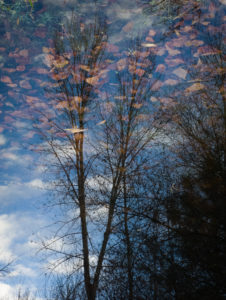 The morning after the election was a heartbreaking, confusing time for me. It was not just that my candidate had lost–that had happened before–or that the president elect would not agree with me on the issues that I consider most important. It was not even the possibility that this man might lead the country into another catastrophic war. That too had happened before. No–what devastated me was the fact that I could not understand how the electorate could vote for someone who so clearly had no moral or ethical center. Did that mean that half the country also lacks a moral and ethical center?
The morning after the election was a heartbreaking, confusing time for me. It was not just that my candidate had lost–that had happened before–or that the president elect would not agree with me on the issues that I consider most important. It was not even the possibility that this man might lead the country into another catastrophic war. That too had happened before. No–what devastated me was the fact that I could not understand how the electorate could vote for someone who so clearly had no moral or ethical center. Did that mean that half the country also lacks a moral and ethical center?